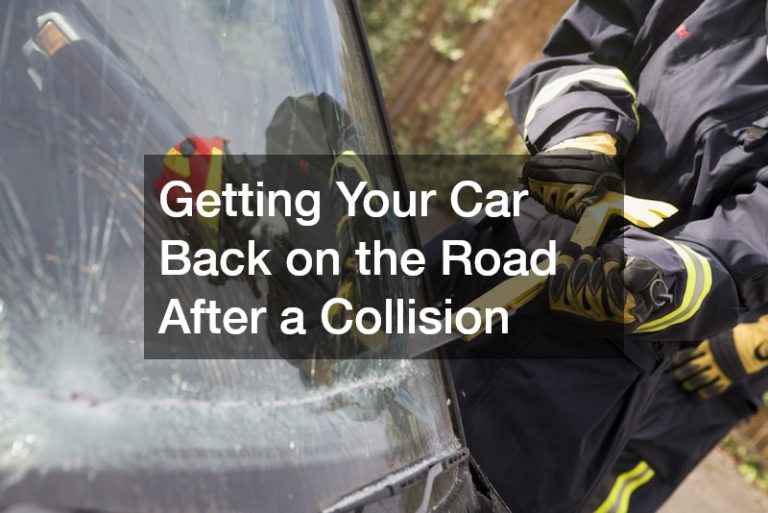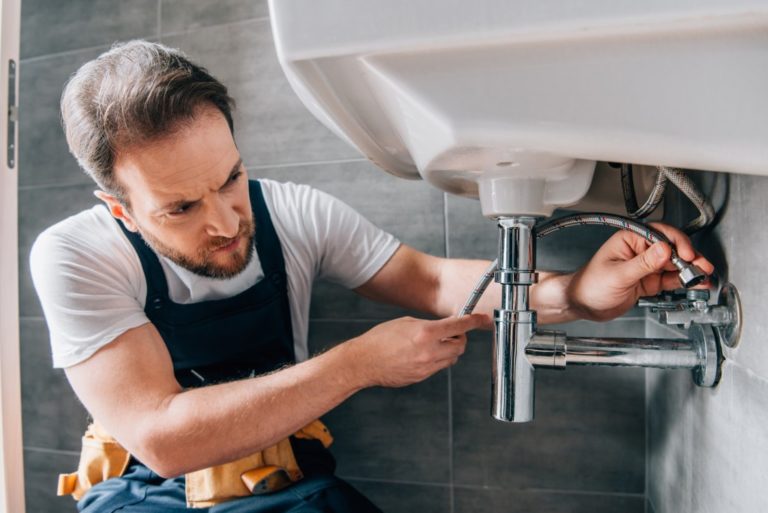When a car accident occurs, the aftermath can feel overwhelming. Your immediate priority is ensuring everyone’s safety, but after that, it’s time to focus on car accident recovery—a process that involves addressing both the legal and mechanical aspects of getting your life and vehicle back to normal. From understanding your legal rights to choosing the right repair services, each step is crucial to ensuring a smooth recovery.
A car accident is a traumatic event, and the journey to recovery can be challenging. Whether the collision was minor or severe, car accident recovery encompasses everything from dealing with insurance claims to restoring your car to its original condition. Breaking the process into manageable steps—such as consulting a lawyer, scheduling repairs, and ensuring proper documentation—can make this overwhelming experience more manageable and help you regain confidence on the road.
1. Consult a Lawyer: Protecting Your Rights

One of the most critical steps to take following a car accident, particularly if it involves significant damage or injuries, is to consult with a car accident lawyer. Navigating insurance claims can be overwhelming, and without expert guidance, you might inadvertently make mistakes that could reduce or jeopardize your compensation. A car accident lawyer specializes in handling these situations, ensuring your rights are upheld and that you receive the financial support you’re entitled to for medical bills, vehicle repairs, and other related expenses.
A lawyer’s expertise is invaluable in helping you understand your legal rights and the complexities of the insurance claims process. They can guide you on avoiding common pitfalls, such as providing statements to insurance companies that may later be used against you. Should your insurance company delay or deny your claim, or if the other party disputes liability, having a lawyer on your side ensures you’re prepared to handle these challenges. Additionally, lawyers play a vital role in gathering and organizing evidence to build a strong case, whether for negotiations or a potential lawsuit. This evidence could include medical records, photographs of the accident scene, and detailed witness testimonies.
When you contact a car accident lawyer, preparation is key. Bring all relevant documentation from the accident, such as the police report, witness statements, and correspondence with insurance companies. Many lawyers offer free initial consultations, giving you an opportunity to discuss the details of your case without financial commitment. Acting quickly after an accident is essential, as time-sensitive evidence may become harder to obtain. By engaging legal counsel early, you place yourself in a stronger position to navigate the aftermath of the accident, from dealing with insurance companies to addressing any legal complications that arise.
2. Understand the Legal Landscape: Know Your Responsibilities
Understanding car accident law is crucial for safeguarding your rights and knowing your responsibilities after an accident. These laws can differ significantly depending on the state where the accident occurs. In “no-fault” states, for example, each driver’s insurance typically covers their own medical expenses and damages, regardless of who is at fault for the accident. Conversely, in “fault” states, the at-fault driver’s insurance is responsible for covering the damages of the other party. Familiarizing yourself with your state’s specific laws ensures that you take the appropriate steps after an accident and know how to handle potential claims.
No matter where you live, there are universal steps every driver should follow after a car accident. First, exchange insurance and contact information with the other driver involved. This step is essential for filing insurance claims later. Calling the police is another important action, especially in accidents involving significant damage, injuries, or disputes about fault. Police reports can serve as critical evidence for insurance claims or legal proceedings. Additionally, taking photos of the accident scene, vehicle damage, and any injuries provides a visual record that can support your case. Even if you feel fine after the accident, seek medical attention as injuries may manifest hours or days later.
Before communicating with your insurance company or accepting any settlement offers, it’s wise to review your policy thoroughly to understand your coverage limits and deductible requirements. Insurance companies may attempt to minimize payouts, so knowing your rights and entitlements can protect you from unfair settlements. In many states, compensation isn’t limited to medical expenses and property damage—you may also be eligible for claims related to emotional distress, lost wages, and pain and suffering. Consulting with a car accident lawyer can provide clarity on these rights and help you navigate the complexities of car accident law in your state, ensuring you receive fair compensation.
3. Get Your Car Towed to Safety
If your car is no longer drivable after an accident, arranging for a reliable towing service is a critical next step. A professional towing service ensures your vehicle is transported safely to a repair facility or a secure location, helping to minimize further damage. This is especially important as collision-related issues, such as structural frame damage or fluid leaks, often require immediate attention to prevent worsening conditions. Towing professionals are equipped to handle these situations efficiently, reducing the stress and risks associated with leaving a damaged car at the accident scene.
When choosing a towing service, it’s important to verify their expertise with your specific type of vehicle. For instance, if you own a luxury or newer model car, requesting a flatbed tow truck is essential to protect the undercarriage and other sensitive components from potential damage. A flatbed tow also prevents additional wear and tear, as it keeps all four wheels off the ground during transportation. Furthermore, confirming that the towing company is fully insured is crucial. This provides you with peace of mind and financial protection in case your vehicle incurs damage during the towing process.
4. Repairing Your Car: Structural and Cosmetic Damage

Once your car reaches the repair shop, the primary focus shifts to addressing any structural and bodywork damage. Collision repair services specialize in restoring your vehicle to its pre-accident condition, ensuring both its appearance and functionality are fully repaired. Depending on the extent of the damage, the work may involve minor fixes like repairing dents and scratches or more extensive efforts such as replacing damaged body panels, straightening the frame, or addressing internal structural issues. These repairs are essential for maintaining the vehicle’s value, performance, and safety.
Proper collision repair goes beyond aesthetics; it’s a critical factor in ensuring your car’s safety features function as intended. Frame damage, for example, can compromise the vehicle’s structural integrity, reducing the effectiveness of crumple zones and potentially interfering with airbag deployment during a future accident. Failing to repair these elements correctly can significantly increase the risk of injury in subsequent collisions. That’s why it’s vital to entrust your car to experienced technicians who understand the complexities of modern vehicle safety systems.
5. Auto Repair: Restoring Functionality
While collision repair primarily focuses on restoring the body and frame of a vehicle, auto repair addresses any damage to its internal systems. An accident, even a minor one, can affect critical components such as the engine, transmission, brakes, steering system, or electrical wiring. Mechanical issues stemming from a collision might not always be immediately apparent but can lead to serious safety hazards or costly repairs if left unaddressed.
Auto repair plays a vital role in ensuring that your vehicle remains safe and roadworthy. For instance, damage to the engine or transmission could compromise performance, while issues with the brakes or steering system pose direct safety risks. Electrical system problems, such as faulty wiring or sensor malfunctions, can also affect modern vehicles’ advanced safety and operational features, making a thorough inspection essential after any collision.
6. Auto Restoration: Bringing Back the Original Look
If your car is older or has sustained extensive damage, auto restoration might be a worthwhile option, particularly for classic cars, rare models, or vehicles with sentimental value. Unlike standard repairs, restoration is a comprehensive process aimed at overhauling both the car’s appearance and its functionality. This meticulous approach seeks to breathe new life into your vehicle, making it look and perform as it did when it first left the factory—or even better.
Auto restoration typically involves an array of services, including detailed bodywork to fix or replace damaged panels, engine repairs or upgrades, and often a complete interior overhaul such as reupholstering seats, restoring dashboards, or replacing carpeting. The process may also involve upgrading safety features to meet modern standards while preserving the car’s original character. For classic or rare vehicles, maintaining authenticity is crucial, so original or period-correct parts are often used to enhance the car’s historical and monetary value.
7. Windshield Replacement: Ensuring Clear Vision

A damaged windshield is one of the most common and urgent issues to address after an accident. Cracks, chips, or shattering can significantly compromise your ability to drive safely by obstructing your vision or weakening the vehicle’s structural integrity. The windshield plays a critical role in protecting passengers during collisions, as it helps absorb impact and supports the deployment of airbags. Promptly replacing or repairing a damaged windshield is essential to restore both safety and functionality.
When selecting a windshield replacement service, prioritize those that use high-quality, certified glass. Glass that meets safety standards set by the National Glass Association (NGA) ensures the replacement is durable, clear, and capable of withstanding the stresses of driving. Improperly installed windshields can lead to leaks, reduced visibility, or further damage, so it’s important to choose a reputable provider with trained technicians who follow industry best practices.
8. Suspension Auto Repair: Maintaining Ride Quality and Safety
Your car’s suspension system plays a critical role in both safety and comfort. After a collision, the suspension might be damaged, affecting the vehicle’s ability to handle the road properly. Problems with the suspension can lead to poor vehicle handling, uneven tire wear, and even a rough ride. That’s why suspension auto repair is essential to restore the vehicle’s stability and smoothness.
Have the suspension system checked by a qualified mechanic to ensure that the shocks, struts, springs, and alignment are intact. If any part of the suspension system is damaged, have it repaired promptly to restore proper handling and prevent further wear on other parts of your car. Regular suspension auto repair maintenance ensures that your vehicle continues to handle well and provides a safer driving experience.
9. Brake Repairs: Essential for Safety
The braking system is one of the most critical safety features of your vehicle, and it’s essential to ensure it remains in optimal condition after any collision. Even a minor accident can affect key components of the braking system, such as brake pads, rotors, and fluid lines. Ignoring or delaying brake repairs can lead to brake failure, which is extremely dangerous and can result in severe accidents. Ensuring your brakes are functioning properly is vital for your safety and the safety of others on the road.
If you notice any changes in how your car brakes—such as squealing sounds, reduced responsiveness, or the car pulling to one side—it’s crucial to have the braking system inspected immediately. These issues can be early signs of problems that, if left unaddressed, could escalate into more serious failures. Addressing braking problems early not only helps maintain safety but also extends the life of your brake components, potentially saving you from expensive repairs or replacements down the line.
10. Car Painting: Restoring the Exterior
After a collision, the exterior of your vehicle may suffer from unsightly scratches, dents, and paint chips. These issues not only affect the appearance of your car but can also expose the underlying metal to rust and corrosion. Car painting plays a crucial role in restoring the vehicle’s aesthetics while providing essential protection against environmental elements, ultimately preserving the vehicle’s structural integrity. A fresh coat of paint can make your car look as good as new, boosting both its visual appeal and longevity.
When selecting an auto body shop for car painting, it’s important to find a reputable provider that specializes in this service and uses high-quality, durable paint. The type of paint applied plays a significant role in ensuring a long-lasting finish that withstands wear and tear, as well as exposure to the elements. If maintaining or increasing your vehicle’s resale value is a concern, look for a shop that offers factory-matching paint colors to maintain the car’s original appearance. This attention to detail helps preserve the car’s aesthetic integrity and appeal to potential buyers.
Conclusion: Get Back on the Road Safely
The process of recovering your car after an accident involves several crucial steps. From legal matters to mechanical repairs, following a systematic approach will help you get your vehicle back on the road quickly and safely. Whether you’re dealing with minor cosmetic damage or extensive mechanical repairs, ensuring that each aspect of your vehicle is addressed will provide peace of mind and restore the safety, functionality, and aesthetic value of your car.
By consulting with a car accident lawyer, understanding your insurance coverage, and working with trusted repair services, you can navigate the post-collision recovery process efficiently. With the right steps, your vehicle will be back on the road, ready to serve you once again.



